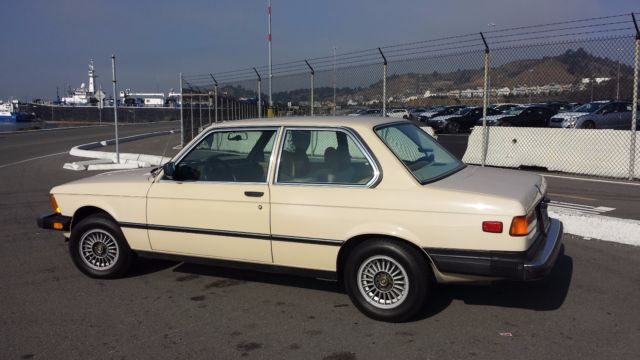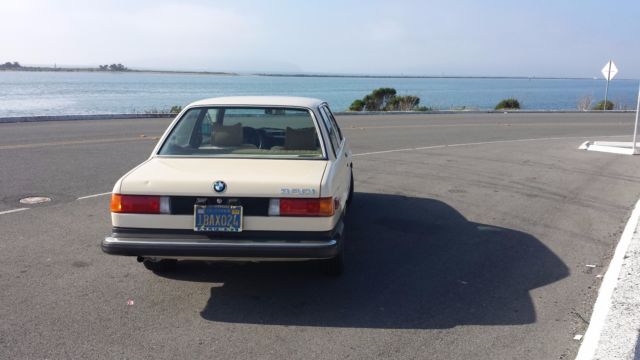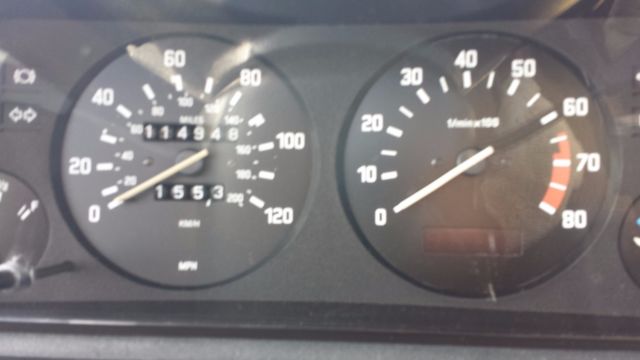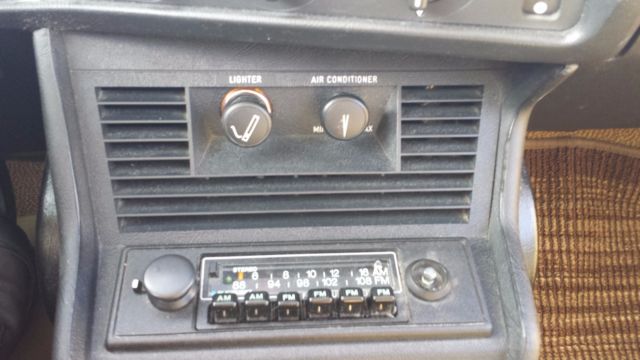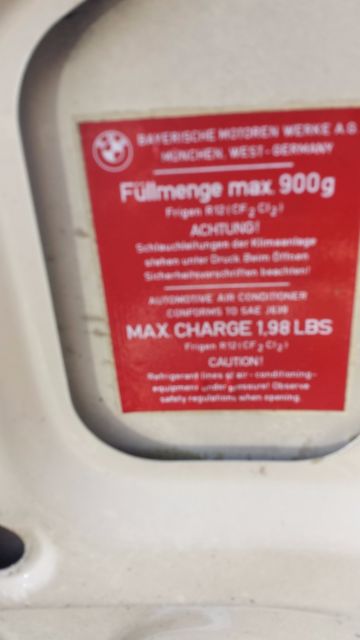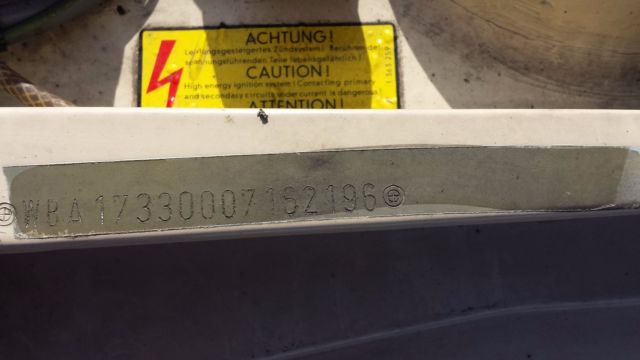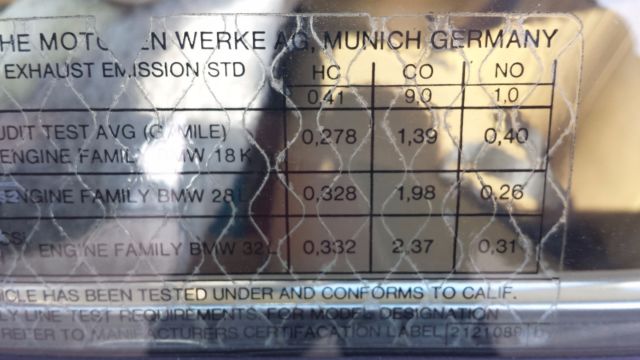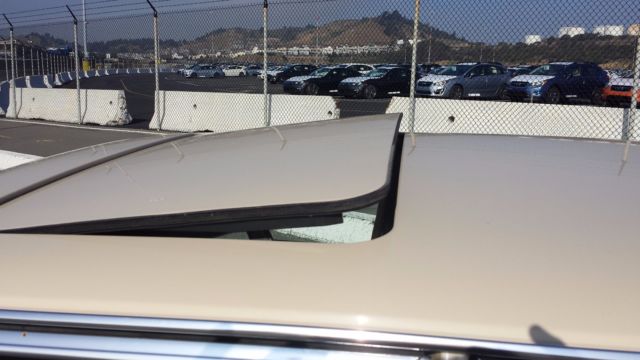1980 BMW 320i
- Price:
- Make: BMW
- Model: 3-Series
- Type: Sedan
- Year: 1980
- Mileage: 107,000
- VIN: 7150230
- Color: Green
- Engine size: 2.0
- Number of cylinders: 4
- Fuel: Gasoline
- Transmission: Manual
- Drive type: RWD
- Interior color: Brown
- Drive side: Left-hand drive
- Options: CD Player, Leather Seats, Sunroof
- Vehicle Title: Clear
- Location: Hubertus, Wisconsin, United States
Description
Rare ZYPRESSEN GREEN MATALLIC Beautiful pristine and hard to find! This 1980 BMW 320i has it all. All original and unblemished. Exterior body and paint in great condition! Interior in excellent condition! Brand new tires and brakes all around. Recently serviced and tuned. Runs like an absolute dream. Very fast and strong. Take a walk back in memory lane with this baby! Guaranteed to get you compliments and looks anywhere you take it. Guaranteed to impress even the most skeptic of buyers. Don't wait this incredible car will not last! Attention BMW enthusiasts and collectors!
California car never seen a Winter. All original with the exception of
Recovered Leather seats
Blaupunkt Stereo MP3 player new BMW battery,
Bilstein shocks and springs and NEW OEM Alpina wheels bought and shipped from Germany.
All original parts and wheels saved and come with car.
New coca custom Stitched floor mats.
Have a great deal invested in this car.
With it being original it does have paint chips and small dash cracks. Comes with any car this age being a survivor.
All Scheduled Maintenance.
Always garaged.
Looks & runs great.
Low mileage.
Records available.
New tires.
No accidents.
Non-smoker.
Runs & drives great.
Upgraded sound system.
Very clean interior.
Well maintained.
HISTORY
BMW E21 is the body designation for the first BMW 3 Series compact executive car, produced by BMW from 1975 to 1983. This series was the immediate successor to theBMW 2002and was superseded by theBMW E30platform.Under the direction of its 51% percent shareholder, Herbert Quandt, BMW decided upon a replacement for their aging2002. Without it, there was the distinct possibility of BMW leaving its core mission of building driver oriented cars, and alienating an existing customer base long enamored with the company’s2002 model. Paul Bracq, Director of Design at BMW from 1970–1974, is credited with setting the design direction of the E213 Series, while Wilhelm Hofmeister is credited with first drawing the small forward wedge at the base of the C-pillar, a strong design trait of the first 3 Series. In 1975 Claus Luthe replaced Bracq and became the owner of the project. In July 1975, BMW’s Board of Management first presented this new model series in theMunich Olympic Stadiumfor public appraisal. The frontal view of the new car was dominated by the BMW trademark kidney grille standing out clearly from the radiator cover.
The wedge shape of the two-door model was distinctive, extending all the way to the unusually high rear end. In response to criticism of the tail design, a black plastic trim panel between the tail lights was added. The car’s styling was otherwise well received. Measuring 4355 millimeters (171.5 inches) in length, 1610 millimeters (63.4 inches) in width, and 1380 millimeters (54.3 inches) in height, the E21 Series continued the tradition of theNew Class. With the wheelbase measuring 2563 millimeters (100.9 in), there was little body overhang in the rear wheel drive design. The track measured 1364 millimeters (53.7 in) at the front, and 1377 millimeters (54.2 in) at the rear. The suspension incorporated rack and pinion steering andMcPherson strutsuspension at the front, and semi-trailing arm type independent suspension at the rear. The power assisted brakes were discs on the front wheels, while the rear wheels had drum brakes.
Initially, a Getrag four-speed manual was the standard transmission fitment. Five-speed Getrag gearboxes were fitted as standard in the 323i and others in later years, but were available at the car’s release as an option, with gear ratio sets favoring either performance or economy. Alternatively, purchasers could opt for the ZF 3 HP-22 three-speed automatic transmission. The cockpit design of the E21 marked the introduction of a new design concept, with the center console angled towards the driver. This feature has become part of BMW’s interior design philosophy for many years. As a sign of passive safety, all edges and control elements within the interior were rounded off and padded.At the E21’s release, three models were available: with 316 (1.6 litre), 318 (1.8 litre) and 320 (2.0 litre) versions of the BMW M10four cylinderengine. To draw clear visual distinction within the new model series, the 320 models came with dual headlights, while the 316 and 318 had single round headlights. At the end of 1975,the 320iwas introduced; the engine was fitted with Bosch K Jetronic fuel injection, delivering 125bhp (93kW) on premium grade gasoline. The 320i was a upgraded version of 320 with an M10 engine; Bosch K-Jetronic (LambdaO2) fuel injection, 125bhp (93kW; 127PS) and limited slip differential also as an option.
.
 BMW 1980 320i(e21)
BMW 1980 320i(e21)
Mileage: NA
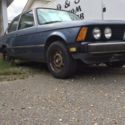 1980 bmw 320i base 1.8l
1980 bmw 320i base 1.8l
Mileage: 216000
 1980 BMW 320I EXTREMELY CLEAN
1980 BMW 320I EXTREMELY CLEAN
Mileage: 117,500
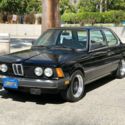 1980 BMW 320I SUNROOF COUPE/ AC
1980 BMW 320I SUNROOF COUPE/ AC
Mileage: 167133
 1980 BMW 320i/A 2 DOOR COUPE
1980 BMW 320i/A 2 DOOR COUPE
Mileage: 114,977
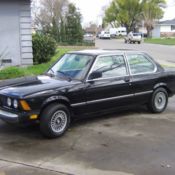 1980 BMW 320i E21, rust free California car
1980 BMW 320i E21, rust free California car
Mileage: 175,000
 1980 BMW 320I (Nevada Car) Rust Free BMW-M-Tribute
1980 BMW 320I (Nevada Car) Rust Free BMW-M-Tribute
Mileage: 178,000
 1980 BMW 320i --- Clean title, rust free, AC, sunroof
1980 BMW 320i --- Clean title, rust free, AC, sunroof
Mileage: 174,177
 1980 bmw 320i, Collectors Condition, One of a kind, Zypressen green metallic
1980 bmw 320i, Collectors Condition, One of a kind, Zypressen green metallic
Mileage: 305,000
 1980 BMW 320i 5 spd AC 167k miles clean e30 325is 318is m3 2002 e28
1980 BMW 320i 5 spd AC 167k miles clean e30 325is 318is m3 2002 e28
Mileage: 167,000
